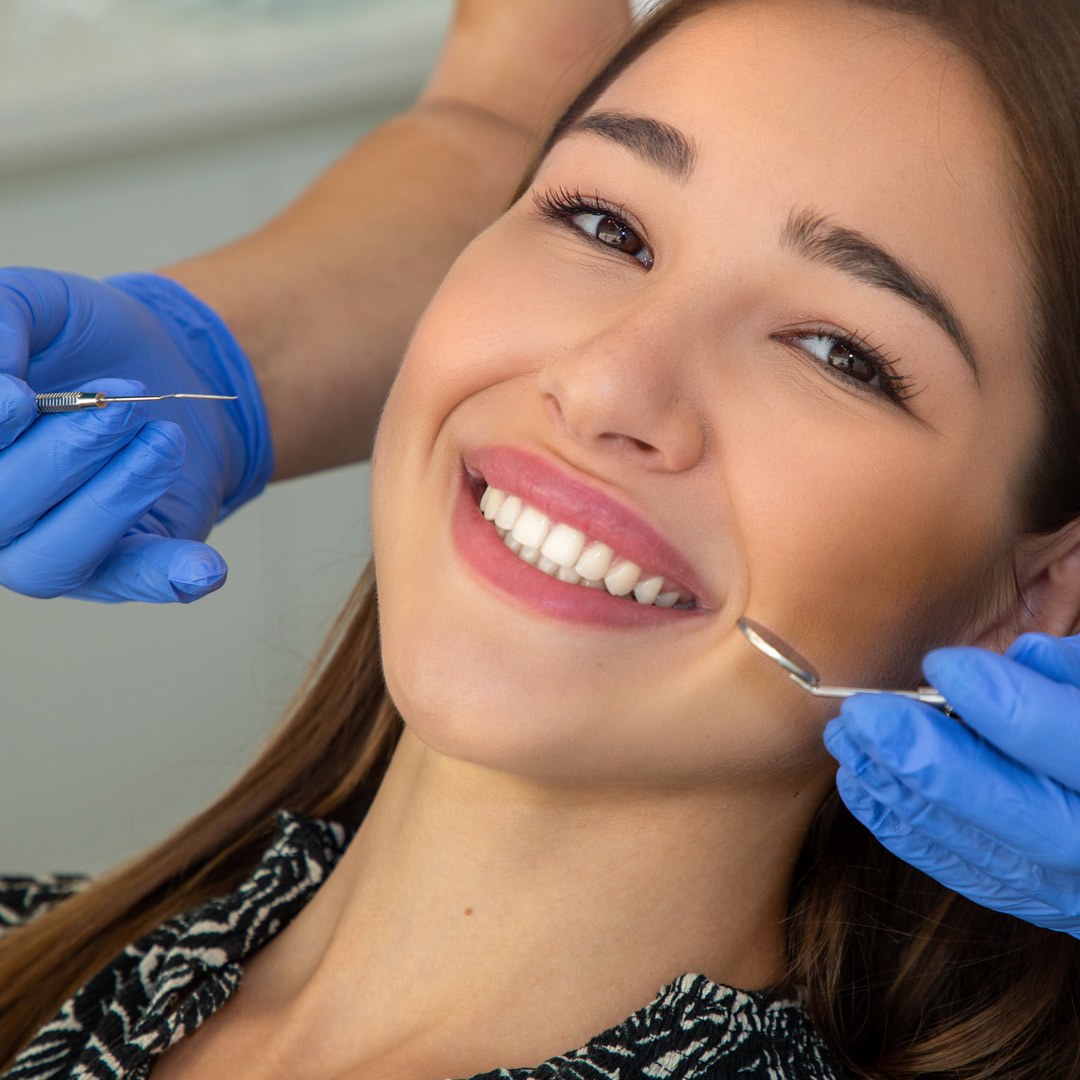The fast pace of modern life often leaves us with little time for ourselves. We often dream of “picture-perfect teeth,” yet the thought of wearing braces for years, frequent check-ups, and tooth preparation can discourage us from pursuing it in the first place. Because we love seeing our patients’ satisfied smiles, Fiziodent Polyclinic follows the philosophy of modern minimally invasive dentistry, allowing us to quickly and painlessly achieve the goal: beautiful and healthy teeth.
Considering each patient's wishes and preferences, we recommend a protocol that will bring them to their desired results as quickly as possible. To help you understand this concept, we will explain the most common "tools" our dentists use on the way to achieving the goal.
CLEAR ALIGNERS
Clear aligners are transparent and discreet trays used to achieve orthodontic tooth movement. With the expertise of our orthodontic specialists, almost any dental anomaly can be corrected with clear aligners. With your disciplined use, clear aligner therapy usually takes less time than treatment with fixed braces, although exceptions exist.
Learn more about clear aligners…HYBRID ORTHODONTICS
Often, in the same dental arch, certain tooth movements are better suited for clear aligners, while others are more efficiently corrected with fixed braces. Thanks to our knowledge of both orthodontic techniques, we can offer a combination that will get you to straight teeth as quickly as possible. For some patients, therapy begins with clear aligners and finishes with fixed braces, or vice versa.
Sometimes, a patient may wear a clear aligner in one dental arch and a fixed brace in the other. This is called hybrid orthodontics.
Of course, this depends on the type of your dental anomaly, which is why a detailed analysis is necessary during the first specialist examination. Once orthodontic treatment achieves a harmonious alignment of the dental arches and straight teeth, patients often choose additional tooth shape and color corrections, which require little time and are minimally invasive to their teeth.
Learn more about hybrid orthodontics…TEETH WHITENING
If you are not satisfied with the color of your natural teeth, you may be an ideal candidate for professional whitening, which can lighten your teeth by several shades. Unfortunately, there are sometimes contraindications for whitening, which is why it is very important to consult a dentist before the procedure so they can provide an individualized approach and explain the process to you.
FREE HAND BONDING AND INJECTION TECHNIQUE
Orthodontics can only change the position of teeth, not their shape. Since nothing in the human body is perfectly symmetrical, the same applies to teeth. Most often, the upper incisors differ in shape and length, which sometimes becomes an aesthetic concern after orthodontic treatment.
Thanks to the quality and wide range of colors of today's composite materials (used for white fillings), it is possible to quickly, non-invasively, and long-term correct this issue. Our dentists have mastered various techniques for reconstructing tooth shape with composite and will gladly suggest the method they consider best for you in order to meet today's high aesthetic standards. We also use digital tools that allow both the dentist and the patient to visualize the planned procedure. What is most important and interesting to patients is that the teeth do not need to be drilled, and the entire procedure is completely reversible.
PREPLESS VENEERS
Completely ceramic prosthetic restorations have become the gold standard of aesthetics in dentistry.
Veneers are thin ceramic “sheets” that mimic the natural appearance of teeth and are cemented to the front surface of the tooth. With conventional veneers, minimal tooth reduction is usually required; however, the special feature of prepless veneers is that your teeth are altered minimally or not at all. Veneers, crafted by a dental technician based on impressions of your teeth, are directly cemented to the tooth surface and remain permanently in the mouth. They can correct teeth' shape, size, and color, although sometimes there are contraindications, making consultation with a dentist necessary.
TABLETOPS OR OCCLUSAL VENEERS
A deep bite is a common orthodontic anomaly that, in many cases, prolongs orthodontic treatment or prevents the reconstruction of front teeth in non-orthodontic patients. It is essential to correct this bite to achieve a harmonious and functionally correct occlusion that does not overload the front teeth, which are often excessively stressed in such cases. Tabletops are often used to accelerate the process of bite elevation. This procedure involves building up the posterior teeth (usually molars and premolars) in height to raise the bite and relieve stress on the front teeth. The entire procedure is non-invasive, meaning there is no preparation (tooth reduction). Such occlusal veneers can be made from composite, PMMA, or ceramic materials and are customized to the needs of each patient.
